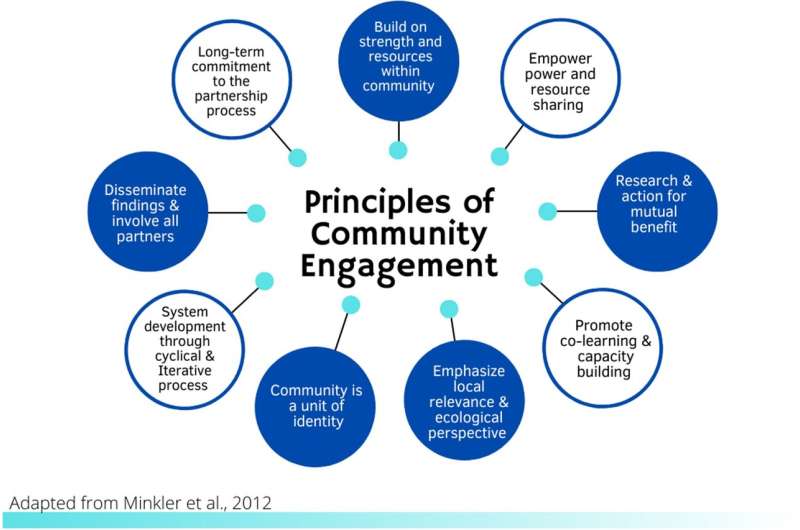New study describes how best practices can be applied to community engagement programs

In the U.S., the Clinical and Translational Science Award Program was designed to advance the efficiency of research translation; speeding up the process of bringing discoveries from the laboratory, clinic and community to policy and practice as a means of improving individual and public health. Community Engagement (CE) programs are a required and essential component of all Clinical and Translational Science Institutes (CTSIs) and seek to extend the capacity of CTSIs to design, implement and disseminate innovations that benefit communities through bi-directional engagement.
Despite calls for CTSIs to fill the gaps in understanding about CE science and methods, there remain few studies that systematically report on the activities of CE programs and more specifically, the strategies they use to implement community engagement. These gaps limit widespread dissemination of best practices. Now a new paper lays out a road map for using knowledge about how best practices can be implemented to measure the impact of a community engagement program.
"Other community engagement programs have focused on narrow measures, while the plan we describe incorporates different strategies, like providing assistance to people who want to engage with the community, and measures how that strategy relates to our programs reach, adoption, effectiveness, implementation and maintenance over time," explains corresponding author Christine Marie Gunn, Ph.D., adjunct assistant professor of medicine at Boston University School of Medicine, assistant professor at the Dartmouth Institute for Health Policy and Clinical Practice, and health equity liaison to the Community Outreach and Education Program at the Dartmouth Cancer Center.
The specific aims of the Boston University CTSI CE program are to 1) develop new and sustain existing community-academic partnerships; 2) expand community engagement capacity for researchers and community members and their organizations/systems; and 3) disseminate best practices for CE research approaches.
The researchers brought together a team of experts in implementation science, community engagement, measurement and research to map out their program evaluation. They then used best practices to make sure the activities they were designing were consistent with evidence on how to implement community engagement.
According to the researchers, this research is more about how to take the best evidence and move it into practice—called translational research. "This paper evaluates how community engagement, as an evidence-based practice, can be measured using knowledge from the field of implementation science."
Gunn hopes this framework can be used to help others demonstrate the importance of community engagement in moving research into practice. "The more institutions can generate evidence in support of engaging community partners, the more impactful our research will be over time," she adds.
These findings appear online in the Journal of Clinical and Translational Science.
More information: Christine M. Gunn et al, Integrating community engagement with implementation science to advance the measurement of translational science, Journal of Clinical and Translational Science (2022). DOI: 10.1017/cts.2022.433


















